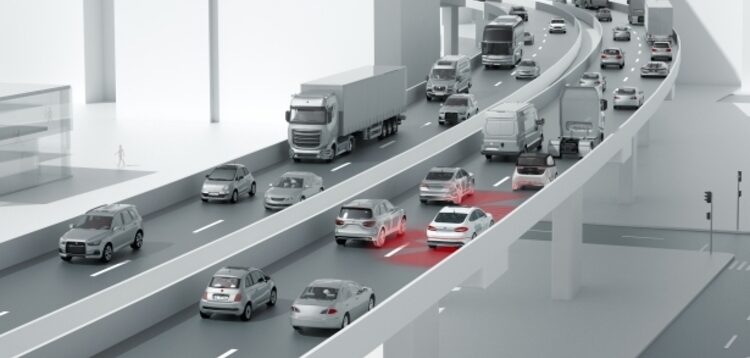As the automotive industry moves toward Level 3 and greater automation, the increasing complexity means higher demands on sensor performance, control functions and computing capacity.
To help developers handle this complexity, engineering service provider FEV says it has developed unique methodologies for the development of such systems. These methodologies are, it states, used to examine and validate vehicle behavior in a wide variety of driving situations, and cover the areas of systems engineering, data management, and functional, system and vehicle testing.
FEV claims that its scenario and model-based systems engineering (MBSE) concept offers many advantage, limiting complexity as well as the ever-increasing number of verification and validation requirements for automated driving functions.
MBSE uses scenarios that describe complex traffic situations to determine the general architecture and design of systems for automated driving in a logical manner. Taking comprehensive use cases into account, these define the desired behavior of a given function, accounting for all relevant interactions with the environment, the driver and other road users.
“By incorporating scenarios into our MBSE approach, we ensure validation of the developed driving functions. For example, precise test scopes for individual requirements can be assigned and combined into test scenarios for different test platforms,” said Elmar Boerner, senior group director for ADAS (advanced driver assistant systems) and AD (automated driving) development at FEV. “The scenario thereby describes temporal relationships between different scenes. Scenes, in turn, are snapshots of the environment, dynamic elements and all actors, as well as the observer’s self-representation and relationships to each other.”
As part of the requirements creation phase within the MBSE approach, FEV’s scenarios are integrated as central elements in the development environment. The company’s self-developed data acquisition chain is apparently of critical importance here. It collects measurement data from FEV’s autonomous vehicles during test drives with the help of a networked logger, and classifies them into scenarios during measurement sessions. The collected data also allows scenarios to be analyzed directly during the validation phase and prepared for simulation in corresponding databases. The comparison with specified scenarios then results in a continuous development loop from system design, to system test, and back.
FEV claims its technique differs from conventional approaches to automated driving functions. Not least because use case definitions are expanded by incorporating scenario specifications at each stage of development with respect to customer requirements, and are then linked to relevant scenarios using its proprietary MBSE methods.
This provides clear traceability between individual requirements and possible operating conditions which in turn results in high automation potential in activities such as database analyses and test case derivation.
Subsequent modeling is carried out using information obtained from the road, traffic infrastructure, time-limited variables such as construction site signs and moving objects, in addition to environmental factors such as the weather. Models can be used to generate test cases for various simulation environments with the help of automation. Component requirements can also be defined – for example, for the performance of the sensors – and test cases for various simulation environments can also be generated.
This is said to significantly reduce the verification and validation burden, since more complex scenario spaces can be covered through clever modeling of scenarios with automatically generated test cases. Such scenario spaces are required for simulation in cloud environments, and for model and software-in-the-loop tests with wide-ranging variations, such as ‘corner’ or ‘edge’ case simulations.


